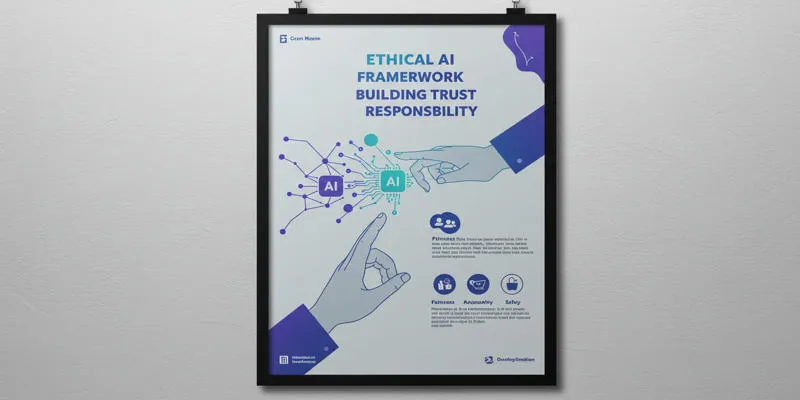Introduction
Shopping online has become second nature for many, but it’s still full of small annoyances—endless scrolling, too many choices, forgotten discounts, and clunky checkouts. Visa is addressing these issues by introducing AI shopping agents designed to make buying easier, smarter, and faster. These aren’t just chatbots answering basic questions.
They learn what you like, find better deals, and even handle the checkout for you. By blending their payment expertise with artificial intelligence, Visa hopes to take the stress out of online shopping, turning it into a more personal, seamless experience that feels genuinely helpful instead of overwhelming.
How Do Visa’s AI Shopping Agents Work?
Visa’s new AI shopping agents operate as personal assistants embedded within supported shopping apps or websites. Customers can interact with the agents through a simple text or voice interface to find products, compare prices, or get recommendations based on past purchases or stated preferences. For instance, if you’ve often bought running shoes from a specific brand, the agent will prioritize showing similar or newer models during your next shopping session.

The AI behind these agents leverages Visa’s secure transaction data and partner retail platforms to recognize patterns in consumer spending without exposing sensitive payment information. Shoppers don’t need to manually input previous purchases, as the agents can already build a comprehensive picture of their habits and favorite stores. Over time, the agents adjust to new tastes and budgets, suggesting alternatives if prices rise or better deals emerge.
Beyond suggesting items, these agents guide users through the checkout process, filling in shipping information, applying available discounts, and confirming payment with one click. This eliminates the need for multiple steps and logins that frustrate many online shoppers. Some implementations even include delivery tracking, enabling consumers to type, “Where’s my order?” and receive an instant response.
Benefits for Consumers and Retailers
For Consumers
The biggest draw for customers is simplicity. Many shoppers face choice overload, with hundreds of similar products to sift through and unclear reviews to read. Visa’s AI shopping agents narrow down the list to a few solid options that fit both style and budget, cutting through the clutter. They’re particularly helpful for repeat purchases or when shopping for hard-to-find items, as they remember past preferences.
For Retailers
Retailers benefit as well. The AI agents increase engagement by reducing abandoned shopping carts, since the checkout process becomes faster and less cumbersome. By surfacing the right products to the right customers, they improve the chances of upselling complementary items or introducing customers to new products they might not have noticed otherwise. Retailers partnering with Visa can even fine-tune their catalogs to better align with the agent’s recommendations, creating a more seamless ecosystem.
Visa ensures that privacy controls remain clear and accessible. Shoppers can opt out of certain tracking features or limit the use of personal data to shape their suggestions. This addresses concerns about AI-driven shopping, particularly the fear of being overly surveilled or manipulated by hidden algorithms.
How Does This Fit into Visa’s AI Strategy?
The launch of AI shopping agents reflects a broader shift in Visa’s approach to artificial intelligence. Over recent years, Visa has been quietly expanding its AI capabilities, primarily for fraud detection, transaction approval, and risk management, operating invisibly to ensure secure payments. The shopping agents mark one of the first times Visa has visibly put its AI directly into the hands of everyday consumers.

By embedding AI into the shopping experience, Visa positions itself not just as a payment processor but as a trusted shopping partner. This could deepen customer loyalty and open up new revenue streams beyond traditional card transactions. Retailers and banks working with Visa are closely watching this move, as it could pave the way for similar AI-driven tools that streamline other parts of the shopping journey, such as returns, customer service, and financial planning.
This step keeps Visa competitive in a market where other tech companies, including Amazon and Google, are developing their own AI shopping assistants. However, Visa’s unique strength lies in its payment expertise, setting it apart by linking shopping assistance directly to secure payment and purchase tracking.
What Shoppers Can Expect Next
As the technology rolls out more widely, Visa plans to expand the capabilities of its AI shopping agents. Potential features under development include deeper integration with social media shopping, wishlist creation, and tools for group shopping, where the agent can help coordinate purchases among friends or family. Some retailers are testing versions that can recognize photos of items you’ve seen elsewhere and find the closest match in their store.
Early feedback from pilot programs has been encouraging, with many testers reporting feeling less overwhelmed while shopping online. People who struggle with decision fatigue or dislike spending time on price comparisons found that the agents helped them feel more confident in their choices. Yet, some shoppers remain cautious, preferring a more hands-on approach and worrying that AI might make decisions they’d rather make themselves.
Visa has stated that it’s paying close attention to these concerns, ensuring that humans remain in control, with agents acting as helpers rather than replacing personal decision-making.
Conclusion
Visa’s AI shopping agents represent a thoughtful shift in how technology supports everyday buying decisions. By simplifying searches, personalizing suggestions, and streamlining checkout, these assistants provide a more human-centered shopping experience without overwhelming users. They balance convenience with privacy, giving people control over their preferences while minimizing the hassle of endless scrolling and form-filling. As shoppers grow more comfortable with AI’s role in their routines, this approach could reshape online commerce into something far more intuitive. Visa’s focus on making transactions smarter and simpler through AI marks an important step toward making shopping feel less like work and more seamless.
For more information on AI developments in shopping, you might want to explore Google’s AI Shopping Tools or Amazon’s AI Shopping Innovations.
 zfn9
zfn9






















